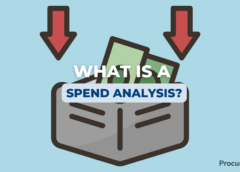
Introduction: Understanding the Importance of Analyzing Your Spending Patterns
In our fast-paced lives, where financial transactions happen with a swipe or a tap, it’s easy to lose track of where our hard-earned money is going. Whether it’s that daily latte, impulse online shopping, or recurring subscription services, our spending habits shape our financial well-being. In this section, we’ll explore why analyzing your spending patterns is essential and how it can empower you to make informed financial decisions.
1. Self-Awareness and Mindful Spending:
– Insight: Understanding your spending patterns begins with self-awareness. By tracking your expenses, you gain insights into your financial behavior.
– Example: Imagine you discover that you spend a significant portion of your income on dining out. This realization prompts you to evaluate whether those restaurant bills align with your priorities.
2. Budgeting and Goal Alignment:
– Insight: Analyzing your spending helps you create a realistic budget. It’s like creating a roadmap for your financial journey.
– Example: Suppose you’re saving up for a dream vacation. By examining your spending, you can allocate funds more intentionally toward that goal.
3. Identifying Problem Areas:
– Insight: Spending patterns reveal problem areas. Overspending on non-essentials can lead to financial stress.
– Example: You notice that your online shopping addiction is draining your bank account. Acknowledging this allows you to take corrective action.
4. Tracking Trends and Seasonal Variations:
– Insight: Analyzing patterns over time helps you identify trends. Some expenses may spike during specific seasons (like holiday shopping or summer vacations).
– Example: You notice that your utility bills increase during winter due to heating costs. Anticipating this, you adjust your budget accordingly.
5. Behavioral Economics and Nudges:
– Insight: understanding behavioral economics principles can influence your spending choices. Small nudges can lead to better financial decisions.
– Example: You set up automatic transfers to your savings account right after payday. This “nudge” ensures consistent savings.
6. Risk Mitigation and Emergency Preparedness:
– Insight: Analyzing spending patterns helps you prepare for emergencies. Having an emergency fund is crucial.
– Example: Unexpected car repairs won’t derail your finances because you’ve planned for such contingencies.
7. Lifestyle Adjustments and Prioritization:
– Insight: Sometimes, spending patterns reveal lifestyle misalignments. You can adjust your lifestyle to match your financial goals.
– Example: If your gym membership goes unused, consider canceling it and allocating those funds elsewhere.
Remember, analyzing spending patterns isn’t about judgment; it’s about empowerment. Armed with knowledge, you can make intentional choices that align with your financial aspirations. So, grab that metaphorical magnifying glass and explore your financial landscape—it’s an adventure worth embarking upon


